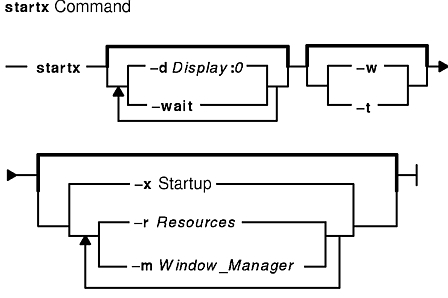

- #Multiseat x session startx software
- #Multiseat x session startx Offline
- #Multiseat x session startx windows
#Multiseat x session startx windows
Fast user switching is also not available on Windows XP if SerialKeys (an accessibility option that allows users to use speech augmentation devices) or Client Services for NetWare are installed. Windows Vista and later no longer have these restrictions.
#Multiseat x session startx Offline
In Windows XP, fast user switching was unavailable if the computer is on a Windows Server domain network or if Offline Files was enabled. In Windows Vista, GINA is replaced by Credential Providers, however they do not support programmatic initiation of fast user switching. However, you can run the second X session on screen 1, the third on screen 2, and so on. By default the first X session runs on screen 0. Provide your login details and type the following command to start X session: startx - :1. Switch to console mode by pressing CTRL+ALT+F1. It was later made unavailable when the original set of PowerToys was replaced by updated versions, but still works with Windows XP SP3 (32-bit) when running as administrator. You can use the same to run multiple X session. It allowed fast user switching using a keyboard hotkey (Win+Q) (similar to Alt-Tab) without even going to the Welcome screen. A PowerToy known as Super fast user switcher was offered in 2002 by Microsoft. In Windows XP, GINA which is a component of Winlogon, and with which fast user switching interacts, can be programmatically called to automate a fast user switch. In Red Hat Linux, the default behavior is to give ownership of "console resources" to the first connected session, but it can share resources among groups of console users or be configured to manage console ownership differently.įast user switching in Windows is based on Remote Desktop Services technology. In Windows, shared resources, such as sound, are available to all sessions.

This is easier and more intuitive, but allows (for example) one user to record another user's conversation. A third is to allow all users access to shared resources. A second option is to grant ownership of resources to each new user. One possibility, simple and secure, is that only the first user gets ownership of resources. Again, hot key sequences allow the user switching to take place.įast user switching may potentially introduce various security-related complications, and is handled differently among operating systems, each having its advantages and disadvantages. " startx - :1" or " X :1 -query localhost"). Alternatively, in the default install, new X sessions can be started at will by using different display parameters to have them run in different virtual terminals (e.g. A separate login window will now appear and the second user can log in (or even the first user again). GDM, SDDM, LightDM, etc.) to the underneath solution and have to be configured to implement fast user switching that way.įor installations with older environments, the functionality must be enabled in the appropriate configuration files then a hot key sequence such as CTRL-ALT-F8 is pressed.
#Multiseat x session startx software
The available desktop environments such as GNOME or KDE Software Compilation adapt their graphical login and session manager (e.g. The most straight forward solution to elegant multi-seat are kmscon/ systemd-consoled in combination with systemd-logind. The feature of "fast user switching" has less severe necessities then multi-seat does because the multiple users don't work simultaneously, and therefore simply works. Despite this kernel limitation, multiseat is supported on Linux. Then you reconfigure your display manager to start multiple instances, each using a different ServerLayout.The Linux kernel's VT subsystem dates back to 1993 and does not understand the concept of multiple "seats", meaning that of the up to 63 VTs, only one VT can be active at any given time. In nf terminology seats are "ServerLayout" sections. This has nothing to do with the desktop environment you are going to use an this answer remains valid.īasically you need to gather the names Xorg uses/gives your devices and monitors, then you combine devices and monitors to "seats".


 0 kommentar(er)
0 kommentar(er)
